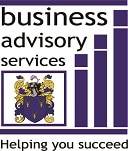If you’re looking to improve family business dynamics, you’re not alone. Managing a family-owned business can often feel like walking a tightrope. Balancing family emotions with business needs is no small feat.
Here are 10 strategies, with real-world examples, to help you foster harmony and success in your family-owned business:
10 Strategies to Improve Family Business Dynamics
Acknowledge Emotions, Then Shift to Business
Discussions often become emotional in family businesses. It’s vital to acknowledge those feelings. For example, disagreements may occur about expanding the business. Start by recognising how each family member feels about it.
Once everyone feels heard, guide the conversation back to a professional, business-focused dialogue. Then discuss the pros and cons from a business perspective.
Define Clear Roles and Responsibilities
Clear roles are essential to reducing conflict. For instance, one sibling might be responsible for marketing and another for operations. Creating written job descriptions can prevent overlap and keep everyone focused on their own tasks.
Use Business Criteria for Decisions
Keep personal relationships separate from business decisions. For example, you might be considering whether to open a new location. Rely on objective data. Use financial projections and market analysis, rather than personal opinions.
Create a pros-and-cons list to help guide decisions based on what’s best for the company, not personal goals.

Keep Meetings for Active Family Members Only
It might be tempting to include in-laws or distant relatives. However, restrict decisions to family members directly involved in the business.
For example, if your cousin isn’t part of the day-to-day operations, leave them out of strategic meetings. This will help avoid unnecessary outside influence and keep discussions focused.
Appoint One Decision Maker
To avoid gridlock or indecision, designate one person with ultimate authority. For instance, appoint a senior family member or the most experienced person. This will help ensure disagreements don’t stall progress.
Everyone’s input is still valuable, but having a leader streamlines the process.
Bring in an Outside Advisor
An external perspective can greatly improve family business dynamics. A neutral advisor can keep discussions professional and on track. For example, a family business consultant can offer impartial advice that helps resolve conflicts.
Establish a Formal Communication Strategy
Structured meetings and updates keep everyone informed, preventing issues from escalating. For example, weekly meetings where each member provides an update can improve overall communication.
Encourage Professional Development
Investing in your family members’ growth will improve their skills and inject fresh ideas for the business.
Send family to leadership and industry-specific training programs will often benefit them and the business. This investment commonly leads to innovative strategies and a more skilled workforce.

Develop a Succession Plan
Planning for the future is essential to ensure the business continues to thrive when leadership changes. For example, your goal may be to pass the business down to the next generation.
Create clear succession plans. Discussing who will take over specific roles can prevent uncertainty and ensure a smooth transition.
Separate Family Time from Business Time
Maintaining boundaries between work and family life helps protect personal relationships. For instance, you might agree not to discuss business matters during family dinners. Allow personal time to stay that – personal.
Could your family business could benefit from professional help?
If you’d like support in navigating the complexities of running a family-owned business, feel free to contact us. I’m available to help you address any challenges and ensure the continued success of your business.
Interested in additional tools to help streamline your business operations and improve profitability? Explore our free online resources specifically designed to improve family business dynamics.


